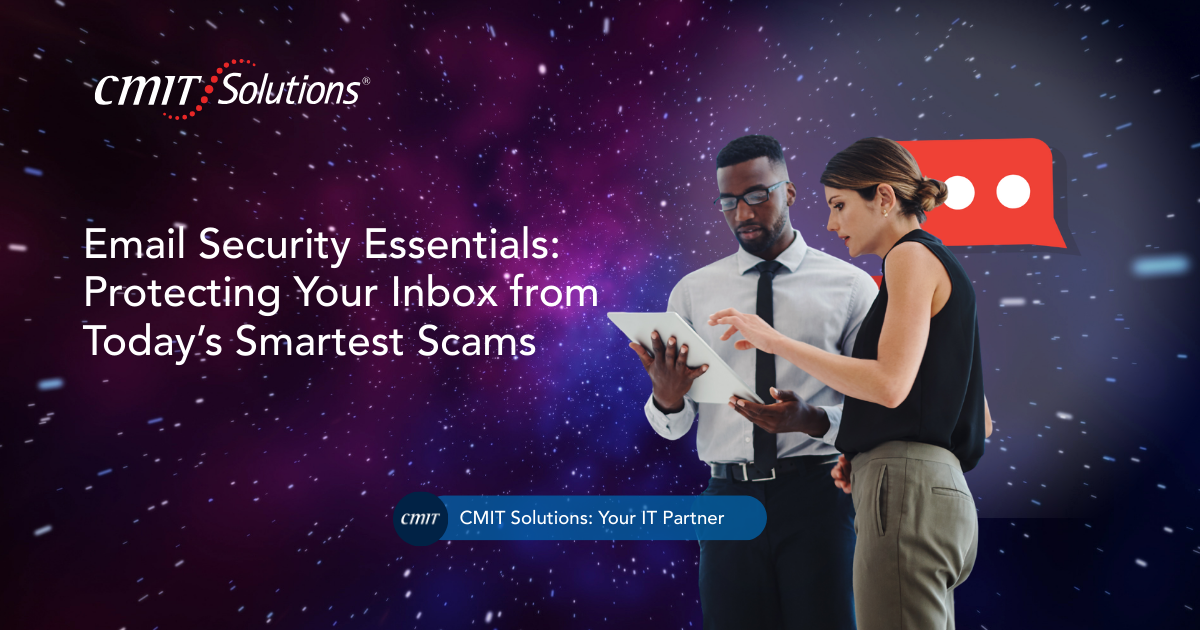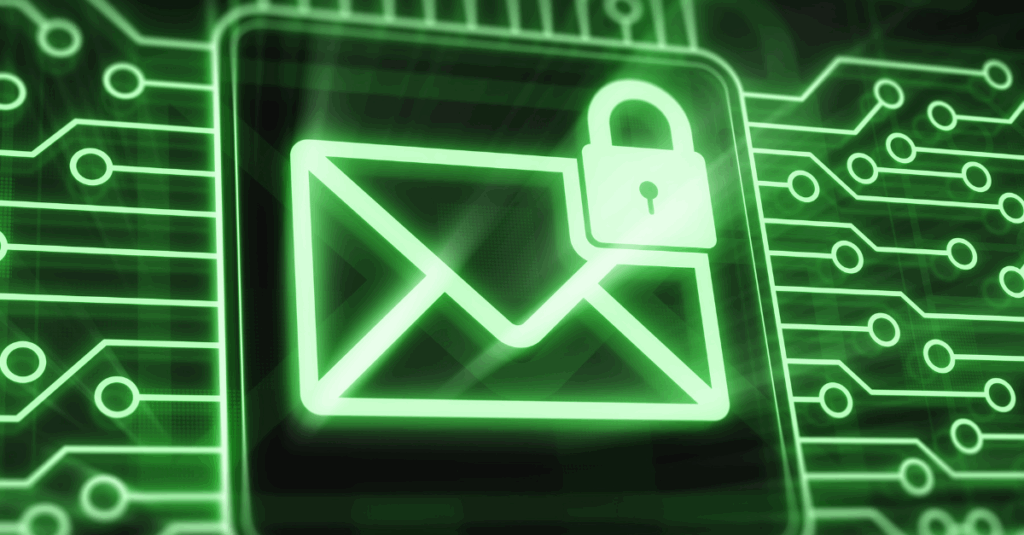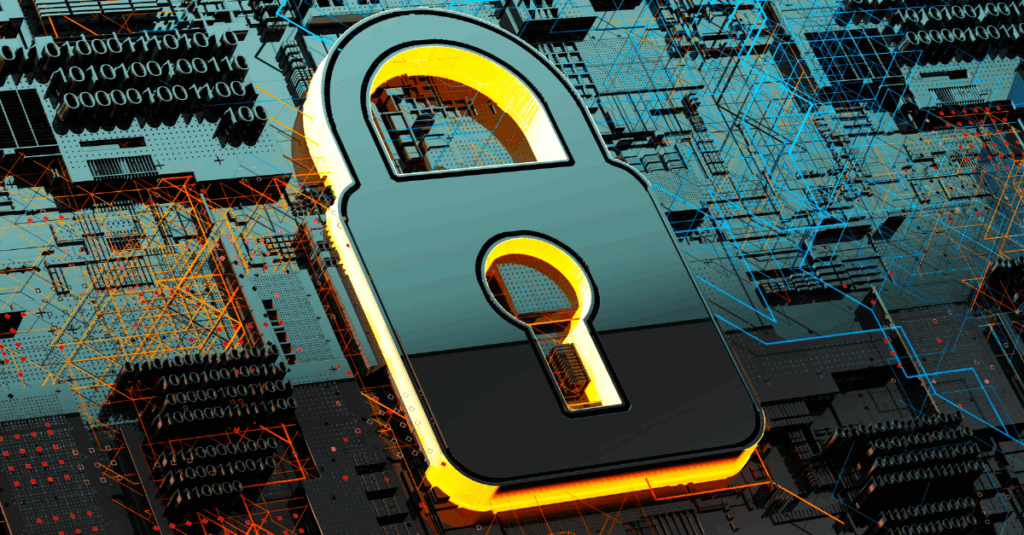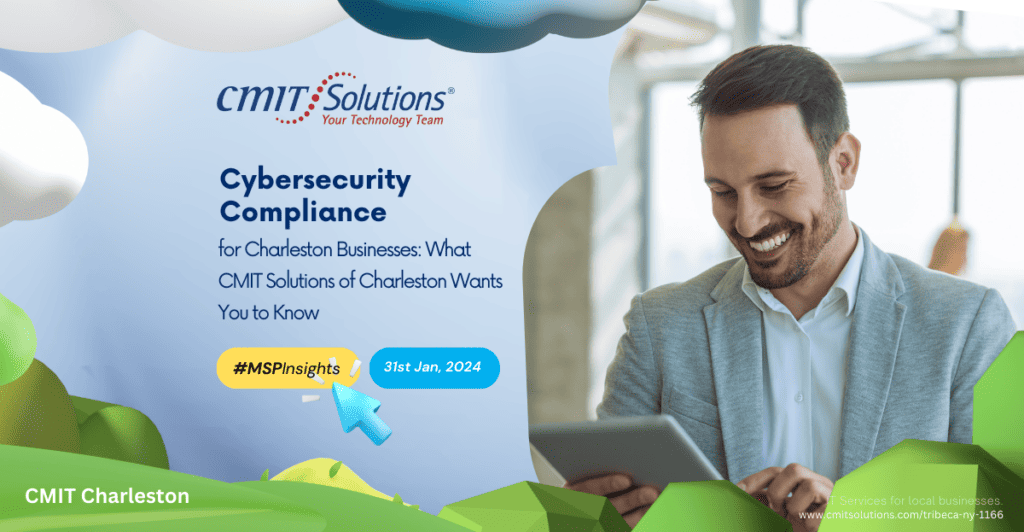Why Email Security Still Matters in 2025
Email remains the most-used tool in business communication and the most exploited. Every day, cybercriminals unleash phishing emails, business email compromise (BEC), malware attachments, and impersonation attacks on unsuspecting organizations. And thanks to AI and automation, today’s email scams are smarter, faster, and more convincing than ever.
From fake invoices to CEO impersonation, attackers are no longer blasting mass spam. They’re crafting targeted, professional-looking emails that bypass basic filters and trick even the most seasoned professionals.
That’s why email security isn’t just about spam blockers anymore. It’s about building a comprehensive strategy that includes smart technology, employee education, and managed IT oversight.
Understanding Modern Email-Based Threats
Email scams have evolved dramatically. No longer obvious and clunky, many attacks now mimic real communication patterns and use corporate logos, email signatures, and even behavioral triggers.
Some of the most common threats include:
- Phishing attacks – Fake login pages or document requests
- Business Email Compromise (BEC) – CEO fraud and vendor impersonation
- Ransomware delivery – Malicious files disguised as invoices or reports
- Credential harvesting – Login links that capture usernames and passwords
- Malware injection – Zero-click links that infect systems on open
These attacks are often coupled with social engineering tactics, which manipulate human psychology to bypass technical controls. As noted in our guide on social engineering scams, it only takes one mistake for an attacker to gain access to sensitive business systems.
Why Email Is a Top Target for Cybercriminals
Email offers everything an attacker wants:
- Direct access to users
- Internal communication context
- Credentials to broader systems (e.g., finance, HR, client portals)
- A bridge to launch lateral attacks across an organization
More concerning, email is where human error thrives. People are conditioned to respond quickly to messages—especially when they look urgent or appear to come from executives. In fact, human error in cybersecurity is responsible for nearly 90% of successful attacks.
That’s why investing in email security has become a necessity not a luxury for small and midsized businesses (SMBs)
Common Mistakes That Compromise Inbox Security
Even the best tools can be undone by small mistakes. Some of the most frequent missteps include:
- Clicking on unknown links or attachments
- Using the same password across platforms
- Replying to spoofed email addresses
- Ignoring urgent update or security warnings
- Failing to verify sender identities for large transactions
These issues are amplified in remote and hybrid environments, where employees rely heavily on email and are isolated from immediate IT support. As outlined in our post on remote email security, educating your team is just as important as upgrading your software.
Building an Email Security Strategy That Works
A strong email security approach involves multiple layers—technology, people, and policy. Here’s what a modern strategy should include:
1. Advanced Threat Protection
- AI-driven filtering for phishing, malware, and ransomware
- URL rewriting to prevent link-based attacks
- Attachment scanning using sandbox environments
2. Authentication Protocols
- Implement SPF, DKIM, and DMARC
- Block spoofed domains and unauthorized senders
- Enforce multi-factor authentication (MFA)
3. User Training and Awareness
- Ongoing phishing simulations
- Monthly security awareness tips
- Incident reporting protocols
4. Policy Enforcement
- Role-based access to email systems
- Message encryption for sensitive data
- Data Loss Prevention (DLP) settings
Many of these controls are part of platform engineering, where security is baked into the tools employees use every day.
How AI Is Powering Smarter Email Scams
Artificial intelligence has transformed the email threat landscape. Cybercriminals now use AI to:
- Generate context-aware phishing emails
- Mimic writing styles and tones of known contacts
- Harvest data for personalized attack messages
- Send thousands of variations to avoid detection
Our insights on generative AI in business show how AI isn’t just a productivity tool it’s also in the hands of bad actors. Email protection must now include AI-based threat detection to match the sophistication of the attacks.
The Role of Managed IT in Email Security
Trying to manage email security manually or across disconnected systems is a recipe for disaster. That’s why many organizations are shifting toward managed IT services that bundle security monitoring, user training, and compliance enforcement into a single strategy.
Benefits include:
- Continuous monitoring of inbox activity
- Managed spam and phishing filters
- Integration with cloud-based backups
- Centralized reporting and auditing
With support from experts like CMIT Solutions of Charleston, you also gain access to proactive alerts, incident response planning, and training that evolves with emerging threats.
How to Spot a Suspicious Email
Train your team to look for red flags in every message they receive. Even the most realistic scams often contain clues:
- Unexpected file attachments or ZIP files
- Slight misspellings in email addresses
- Unusual grammar or formatting
- A false sense of urgency
- Requests for credentials or payment links
Encourage users to hover over links, double-check sender domains, and always verify requests before taking action.
As highlighted in our blog on cybersecurity compliance, encouraging cautious behavior also helps meet key audit and regulatory requirements.
When to Upgrade Your Email Security Tools
If your organization is still relying on basic email filters or free consumer-grade tools, it’s time to upgrade. Look for signs such as:
- Frequent spam slipping through
- Users reporting phishing attempts weekly
- Increasing password resets from suspicious activity
- Poor visibility into inbox metrics and threats
Upgrading may include email gateways, secure email platforms, and integration with a cloud ERP system to streamline security across tools and workflows.
Real Consequences of Neglected Inbox Security
Still not convinced? Consider the risks of doing nothing:
- Financial loss – Wire fraud and invoice scams
- Data breach – Client records, payroll, and IP exposure
- Compliance violations – HIPAA, PCI, or GDPR fines
- Reputation damage – Loss of trust from clients and vendors
- Productivity downtime – Systems frozen due to ransomware
A cautionary example is the Globe Life cyber attack, where employee negligence in email response led to extortion and brand fallout. It’s a clear reminder that inbox security is everyone’s responsibility.
How CMIT Solutions of Charleston Can Help
At CMIT Solutions of Charleston, we offer:
- Phishing simulations and staff training
- Advanced spam and malware filtering
- Encrypted email platforms for compliance
- Policy consulting and strategic IT guidance
- Secure backup integration
We tailor our email security solutions to the unique needs of SMBs across healthcare, finance, law, and retail sectors making sure your inbox is both accessible and protected.
Our managed solutions also assist in incident response, helping you recover quickly in the event of a breach.
Conclusion
Email security isn’t about fear, it’s about preparedness. In 2025, smart scams aren’t just targeting IT departments; they’re going after everyone in your organization, from entry-level staff to your executive suite.
By investing in the right tools, training your team, and partnering with a trusted IT provider, you can build an environment where every inbox becomes a secure gate not an open door.
The best defense isn’t a tool. It’s a culture of awareness. And it starts today.







